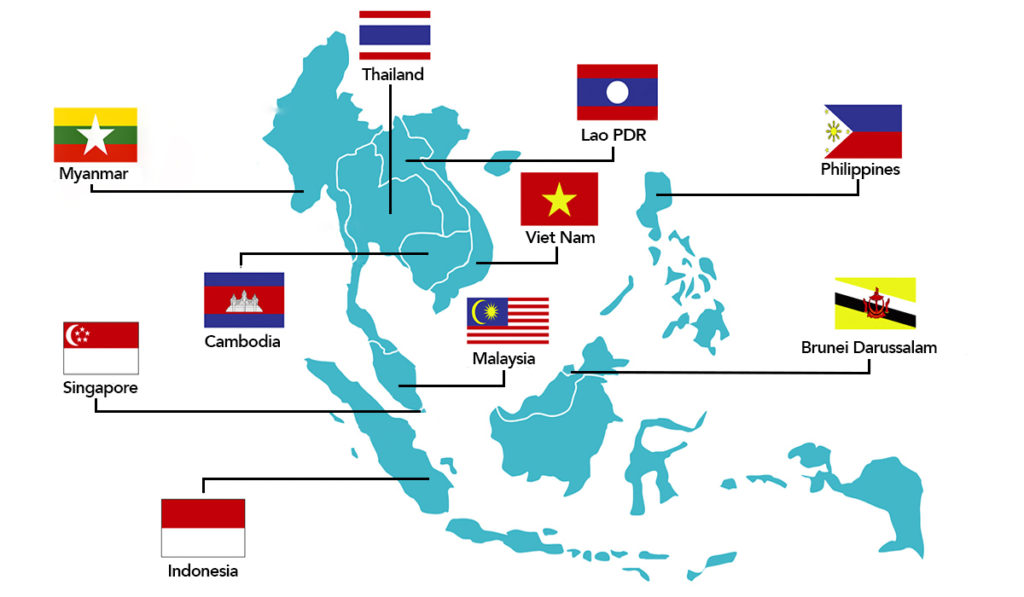Learning Outcomes
- Describe the role of trade agreements in global business

So far you have seen how international organizations such as the WTO, IMF, and World Bank support global trade, but this is only part of the story. Where global trade really gets a boost is from trade agreements (also called trade blocs). This is where the term “global economic integration” gets its legs—from the process of modifying barriers among and between nations to create a more fully integrated global economy. Trade agreements vary in the amount of free trade they allow among members and with nonmembers; each has a unique level of economic integration. We will look at four: regional trade agreement (RTA) (also called a “free trade area”), customs unions, common markets, and economic unions.
Regional trade agreements (RTAs) are reciprocal trade agreements between two or more partners (nations). Almost all countries are part of at least one regional trade agreement (RTA). Under an RTA, countries “huddle together,” forming an international community that facilitates the movement of goods and services between them. Let’s take a look at a few examples of regional trade agreements:
- The United States-Mexico-Canada Agreement (USMCA) facilitates trade among these countries through tariff reductions and elimination of a number of duties and quotas. You can view the full text of the USUMA agreement. The USMCA was signed on November 30, 2018 and entered into force on July 1, 2020. This agreement was created to replace the North American Free Trade Agreement (NAFTA), which was established in 1994.
- The Association of Southeast Asian Nations (ASEAN), shown in Figure 1, provides for the free exchange of trade, service, labor, and capital across ten independent member nations to provide a balance of power to China and Japan.
- The Central American Free Trade Agreement (CAFTA) (Costa Rica, Dominican Republic, Guatemala, Honduras, Nicaragua, and El Salvador) eliminated tariffs on more than 80 percent of U.S. exports and opened U.S. trade restrictions for Central American sugar, textiles, and apparel imports, thereby reducing costs on these products for American consumers[1].

Figure 1. The Association of Southeast Asian Nations (ASEAN)
Customs unions are arrangements among countries whereby the parties agree to allow free trade on products within the customs union, and they agree to a common external tariff (CET) on imports from the rest of the world. It is this CET that distinguishes a customs union from a regional trade agreement. It is important to note that although trade is unrestricted within the union, customs unions do not allow free movement of capital and labor among member countries. An example is the customs union of Russia, Belarus, and Kazakhstan, which was formed in 2010. These countries eliminated trade barriers among themselves but have also agreed to some common policies for dealing with nonmember countries.
Common markets are similar to customs unions in that they eliminate internal barriers between members and adopt common external barriers against nonmembers. This difference is that common markets also allow free movement of resources (e.g., labor) among member countries. An example of a common market is the Economic Community of West African States (ECOWAS), comprised of Benin, Burkina Faso, Cape Verde, Gambia, Ghana, Guinea, Guinea-Bissau, Ivory Coast, Liberia, Mali, Niger, Nigeria, Senegal, Sierra Leone, and Togo.
An even more economically integrated arrangement is the economic union. Economic unions eliminate internal barriers, adopt common external barriers, permit free movement of resources (e.g., labor), AND adopt a common set of economic policies. The best-known example of an economic union is the European Union (EU). EU members all use the same currency, follow one monetary policy, and trade with one another without paying tariffs.
The following video further explains and compares the different types of trade agreements:
You can view the transcript for “Episode 38: Trade Blocs” (opens in new window).
Practice Question
Candela Citations
- Revision and adaptation. Authored by: Linda Williams and Lumen Learning. License: CC BY: Attribution
- Practice Question. Authored by: Nina Burokas. Provided by: Lumen Learning. License: CC BY: Attribution
- Episode 38: Trade Blocs. Authored by: mjmfoodie. Located at: https://youtu.be/YDUq0DINhYk. License: CC BY: Attribution
- Business Fundamentals. Located at: https://dl.dropboxusercontent.com/u/31779972/BusinessFundamentals.pdf. License: CC BY: Attribution
- Free Trade Zone, Shanghai. Authored by: toesoxluver. Located at: https://www.flickr.com/photos/toesoxluver/350819412/. License: CC BY-NC-ND: Attribution-NonCommercial-NoDerivatives
- Modification of ASEAN Countries. Authored by: Sidney KH. Provided by: Wikimedia Commons. Located at: https://commons.wikimedia.org/wiki/File:Khmerall.jpg. License: CC BY-SA: Attribution-ShareAlike
- USTR, CAFTA-DR Dominican Republic-Central America FTA ↵
